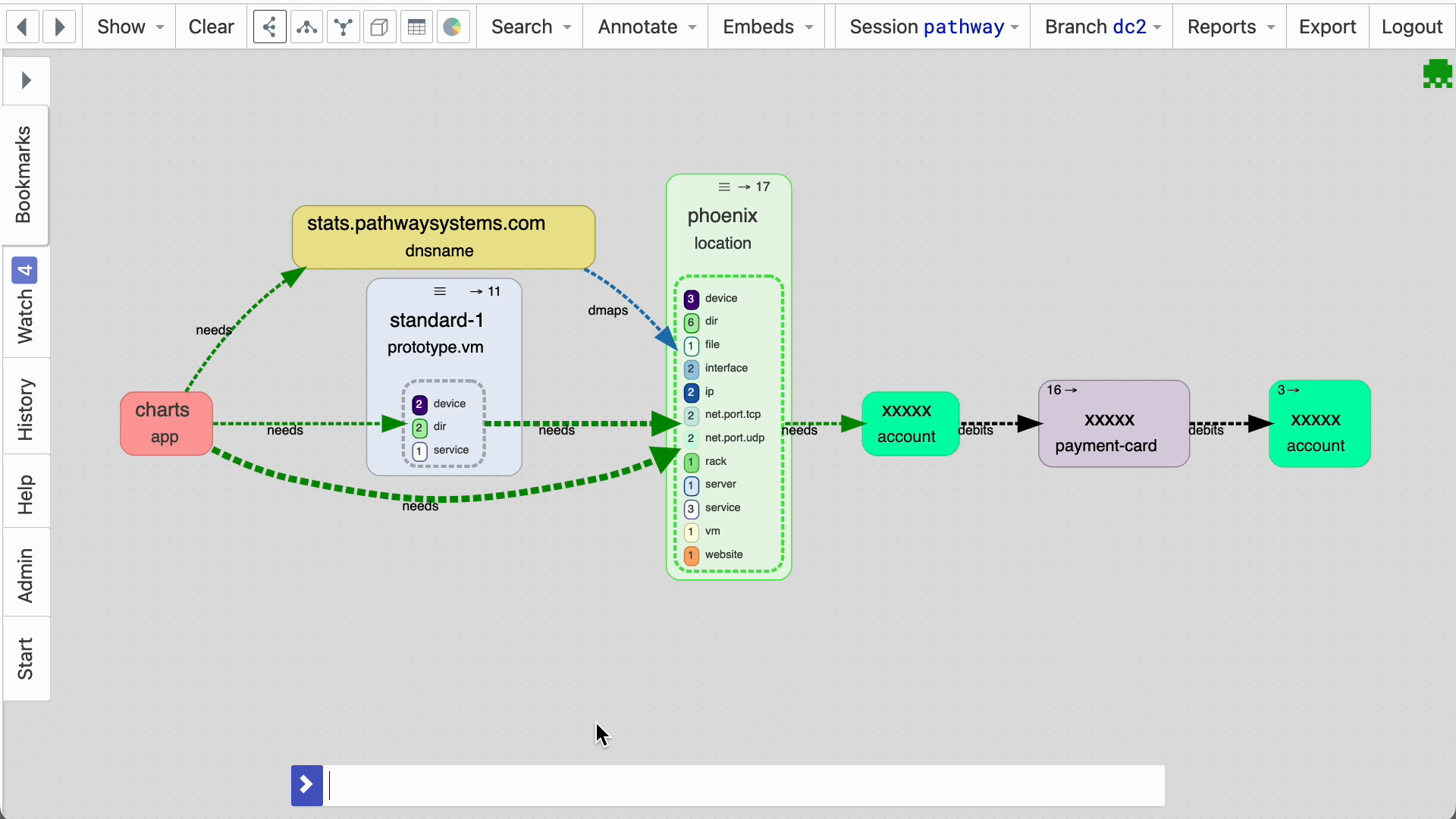For impact analysis and change management of IT systems.
The dependency map (or dependency model) helps predict and troubleshoot behaviors of the system during scheduled maintenance and unexpected failures, a process called "impact analysis".
The video below demonstrates manual modeling of dependencies using Schematix™ to build an interactive dependency map, and using it to perform impact analysis of the system's susceptibility to various failure scenarios. Schematix™ also supports automated IT discovery.
To learn more, watch these additional videos.
Use Schematix™ yourself by registering for a free trial.

In the diagram above, two relations are modeled as lines between objects: needs (green) and mounts (blue). A third, more subtle relation, hosts, is shown as one object contained by another.
Dependency Mapping Strategies
- Directionality of dependency
- Don't confuse data flow with dependency
- Keep it generic
- Plan for constant change
Be sure to model the correct direction of dependency. Continually ask the question, "If this fails, does that fail, or is it the other way around?" Remember to model the direction of the dependency. Failure propagates backwards across the relationships.
It seems IT workers naturally fall back to thinking in terms of data flow and not necessarily dependency. Often the dependency direction is the reverse of the data flow direction. If A feeds data to B, B probably needs A.
There is nothing wrong with modeling data flows, but that's not dependency mapping. A dependency map is a relatively simple model of a complex system because it doesn't get mired in too many details. A dependency map can tell you how the system might fail, give a sense of robustness or fragility, or show the scale, all without ever knowing how the data flows.
It is good to generalize when modeling. The real world is messy and full of differences. Generalizing reduces those variations so you can see the forest for trees. If a map is as detailed as the real world, it's no more useful for understanding that world than the real world itself. The generalizations make the model tractable and therefore valuable.
In the context of information technology, a dependency map must continually change as the underlying IT environment changes.
